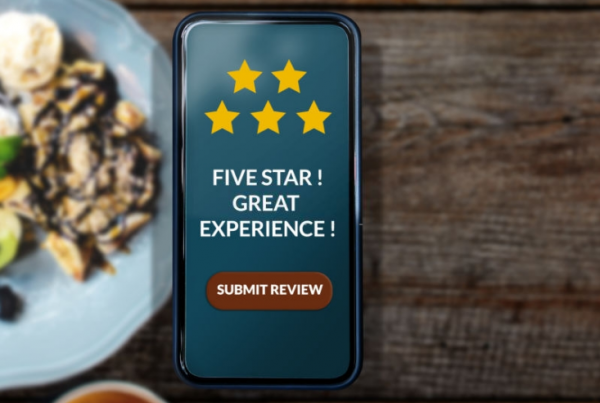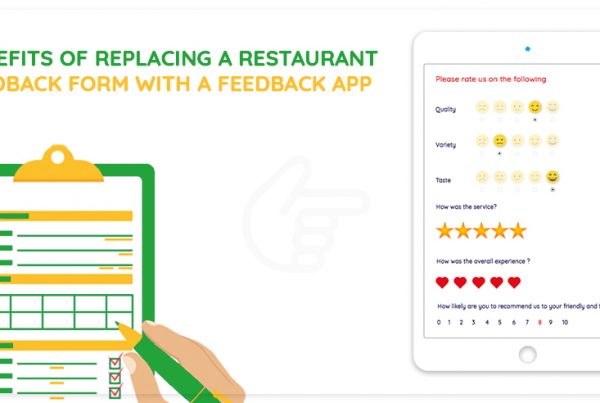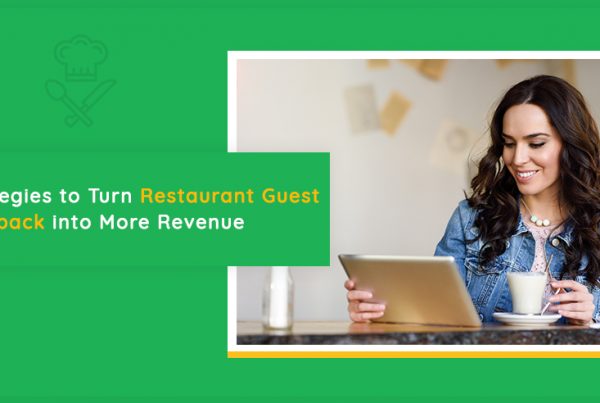In the competitive landscape of the restaurant industry, delivering an exceptional customer experience is the key to success. The advent of innovative technology, particularly restaurant customer experience, has revolutionized the way establishments interact with their patrons. This comprehensive guide explores strategies to harness the power of a restaurant feedback tool, providing insights on crafting a personalized and memorable dining experience.
Understanding the Impact of Customer Feedback in the Restaurant Industry:
Customer feedback is a treasure trove of valuable insights for restaurants. It goes beyond mere opinions; it’s a direct line to understanding the preferences, expectations, and satisfaction levels of diners. Leveraging a restaurant feedback app enables establishments to collect, analyse, and act upon this feedback systematically.
The Evolution of Feedback Apps for restaurants:
Traditional feedback methods, such as comment cards, have given way to sophisticated restaurant feedback apps. These apps serve as dynamic tools that not only streamline the feedback collection process but also empower restaurants to make data-driven decisions to enhance the overall dining experience.
Key Components of a Restaurant feedback software:
User-Friendly Surveys: Craft surveys that are easy to navigate and tailored to gather specific information, ensuring a higher response rate.
Real-time Data Analytics: Gain immediate insights into customer sentiments and preferences, enabling swift and informed decision-making.
Multichannel Integration: Reach customers on various touchpoints, including mobile apps, websites, and social media, to gather feedback across diverse platforms.
Automated Feedback Loops: Implement automated responses and actions based on feedback, demonstrating a commitment to addressing customer concerns promptly.
Elevate your restaurant’s customer experience with tailored feedback insights❤️
Start optimizing today with piHappiness!
Strategies to Personalize the Restaurant Customer Experience:
Tailored Menu Recommendations:
Leverage the data collected through the feedback apps to offer personalized menu recommendations based on customer preferences. Whether it’s dietary restrictions, favourite cuisines, or preferred spice levels, a tailored menu enhances the dining experience.
Special Occasion Recognition:
Capture and remember special occasions celebrated by patrons, such as birthdays or anniversaries. A personalized greeting, complimentary dessert, or a special message on the menu can create a lasting impression.
Personalized Loyalty Programs:
Utilize feedback data to create personalized loyalty programs that reward customers for their continued patronage. Tailor rewards based on individual preferences, encouraging repeat visits and fostering brand loyalty.
Seamless Reservation Experience:
Integrate feedback insights to optimize the reservation process. Use the app to understand peak times, preferences for seating arrangements, and preferred dining durations, ensuring a seamless and personalized reservation experience.
Building Your Personalized Restaurant Experience:
Gather Guest Data:
Your first step is collecting valuable data. A feedback app can do wonders for a restaurant here, offering features like:
- Pre-dining surveys: Understand guest preferences before they even step foot in your door.
- Digital receipts: Collect information on past orders and dining habits.
- Tabletop tablets: Allow guests to provide real-time feedback and preferences during their visit.
- Loyalty programs: Reward repeat customers and gather valuable data on their behaviour.
Analyse and Segment:
Once data is gathered, it is time to delve deeper. Your feedback app should provide tools for:
- Sentiment analysis: Understand the emotional tone behind feedback, identifying areas for improvement.
- Guest segmentation: Group guests based on shared preferences, dietary restrictions, or dining frequency.
Personalize the Journey:
With data and segmentation in hand, you can now personalize the experience:
- Menu recommendations: Suggest dishes based on past preferences and dietary restrictions.
- Table reservations: Remember preferred seating arrangements for returning guests.
- Special offers and promotions: Tailor deals and loyalty rewards to individual segments.
- Personalized greetings and interactions: Address guests by name and acknowledge their special occasions.
Close the Feedback Loop:
Personalization is a continuous cycle. Use your app to:
- Send personalized thank-you notes after visits.
- Respond to feedback promptly and address concerns.
- Share positive feedback with your team to boost morale.
Why Personalization Matters:
Think of it like a perfectly seasoned dish. Generic experiences leave diners feeling dissatisfied, while a personalized touch elevates the entire meal. Here’s why personalization is crucial:
- Loyalty and advocacy: Guests who feel catered to are more likely to return and recommend your restaurant to others.
- Increased revenue: Personalized recommendations and offers lead to higher average order values and customer satisfaction.
- Improved brand perception: Personalization communicates attentiveness and care, boosting your restaurant’s image.
- Enhanced operational efficiency: Understanding guest preferences helps you streamline service and anticipate needs.
The Power of Feedback Apps for Restaurants:
Traditional feedback methods like pen-and-paper surveys offer limited insights. Feedback apps for your restaurants will enhance your digital confidantes in the quest for personalization. These tools empower you to:
- Gather real-time feedback: Get immediate insights into guest preferences through in-app surveys, reviews, and chatbots.
- Identify individual preferences: Track guest data, including dietary restrictions, favorite dishes, and past orders, to personalize future experiences.
- Offer targeted recommendations: Suggest dishes, beverages, and promotions based on individual preferences and purchase history.
- Address concerns promptly: Respond to feedback in real-time, demonstrating your commitment to guest satisfaction.
Strategies to Turn Restaurant Feedback into Personalized Action:
Now, let us move from theory to practice. Here are some key strategies to transform resturant feedback software into personalized magic:
- Data-Driven Menus: Analyse guest data to identify popular dishes and trends. Update your menu seasonally and feature items based on individual preferences.
- Personalized Promotions: Offer targeted discounts, birthday specials, and loyalty programs based on guest data and purchase history.
- Table Recognition: Leverage technology to recognize returning guests and personalize their experience. Offer their preferred table, recommend familiar dishes, and acknowledge their past visits.
- Feedback Loops: Encourage guests to provide specific feedback on their experience through surveys and in-app tools. Use this feedback to refine your personalization efforts continuously.
- Go Beyond the Meal: Personalization extends beyond the food. Remember guest names, offer birthday wishes, and engage in genuine conversations to create a lasting connection.
The Future of Personalized Dining:
Restaurant feedback software is not just a fad, they are the future of dining. As technology evolves, expect even more personalized experiences, from AI-powered menu recommendations to virtual reality dining environments. Embrace these advancements to stay ahead of the curve and keep your guests coming back for more.
Remember, personalization is not about mass customization; it is about recognizing and celebrating the unique preferences of each guest. With a feedback app for your restaurant, it guides you and has a genuine commitment to creating memorable experiences, you can craft a personalized dining experience that leaves your guests feeling like the star of the show








